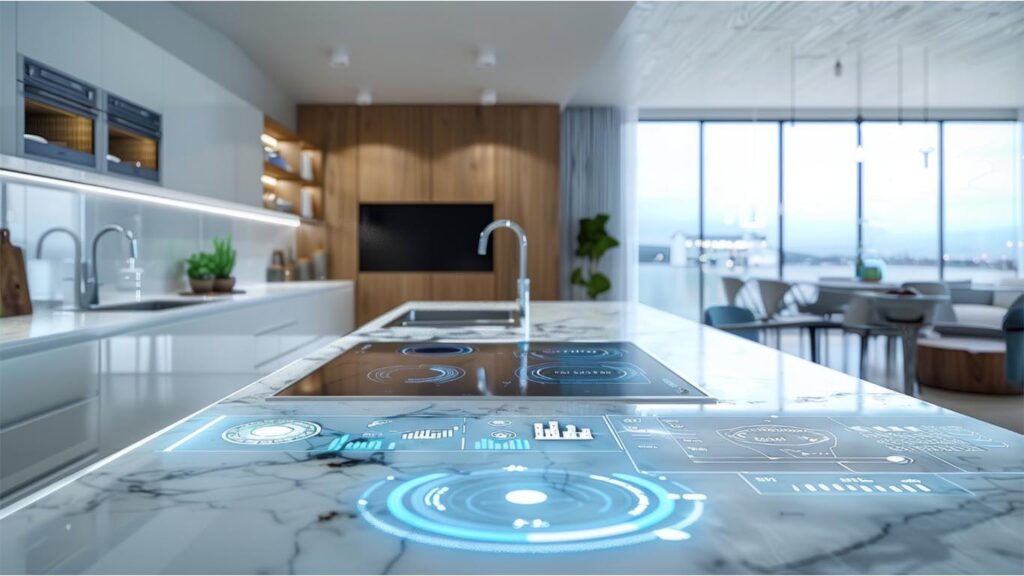The idea of a smart home was once confined to science fiction movies, but today, it’s a reality for homeowners around the world. As technology advances at an incredible rate, smart home devices are transforming the way we live, making homes more efficient, secure, and comfortable. From voice-controlled assistants to intelligent lighting systems, technology is not just enhancing the way we use our homes—it’s revolutionizing home improvement itself.
The Rise of the Smart Home
A smart home refers to a house equipped with internet-connected devices that allow homeowners to control various aspects of their home remotely. These devices, often controlled through smartphones, tablets, or voice assistants, are designed to automate tasks and improve convenience, security, and energy efficiency.
The concept has evolved significantly in recent years, as devices have become more affordable, accessible, and interconnected. Today, a smart home can include everything from automated lighting and climate control to advanced security systems and entertainment setups.
Smart Security Systems
One of the most popular areas of home improvement is home security, and technology has made significant strides in this field. Traditional security systems often rely on alarms and cameras, but smart security systems go beyond that.
Devices like Ring doorbells and Nest cameras offer homeowners the ability to monitor their property remotely, receive real-time alerts, and even communicate with visitors at their doorstep from anywhere in the world. These systems use motion sensors, HD video, and two-way audio to provide comprehensive surveillance, enhancing both security and peace of mind.
Moreover, smart locks and automated entry systems allow homeowners to control access to their home with ease. Instead of fumbling with keys, a smart lock can be controlled via a smartphone, and some systems allow for temporary access codes for guests, cleaners, or service people.
Energy Efficiency and Smart Thermostats
Another area where smart technology is making a significant impact is energy efficiency. Traditional heating and cooling systems can be wasteful, running even when they’re not needed. Smart thermostats, like the Nest Thermostat, are designed to optimize energy use by learning your schedule and adjusting the temperature based on your preferences.
These systems can be controlled remotely, allowing homeowners to adjust their home’s temperature from anywhere, whether they’re at work or on vacation. By reducing energy consumption, smart thermostats not only lower utility bills but also contribute to a more sustainable lifestyle. Some systems even integrate with other smart devices, such as lighting or window shades, to further enhance efficiency.
Smart Lighting
Lighting is another area where smart technology has revolutionized home improvement. Gone are the days of flipping switches to turn lights on or off. With smart lighting systems like Philips Hue or LIFX, homeowners can control the brightness, color, and timing of their lights with a simple voice command or tap on their smartphone.
These systems also allow for automation, meaning lights can be set to turn on or off at specific times, or even adjust based on the time of day or your habits. For example, lights can gradually brighten in the morning to mimic the natural sunrise, helping you wake up more gently. Additionally, smart lighting can be integrated with motion sensors, so lights automatically turn on when you enter a room and turn off when you leave, conserving energy.
Voice Assistants and Home Automation
At the heart of most smart homes is a voice assistant, such as Amazon Alexa, Google Assistant, or Apple Siri. These devices serve as the central hub for controlling other smart devices in the home, making it easy to adjust settings with a simple voice command.
Voice assistants can manage a variety of tasks, such as adjusting the thermostat, controlling the lights, playing music, setting reminders, or even ordering groceries. With smart home integration, voice assistants can manage everything from security to entertainment, creating a seamless and hands-free experience.
Smart Appliances and Kitchen Gadgets
The kitchen has also benefited from smart home technology. From smart refrigerators that can track groceries and suggest recipes to connected ovens that allow you to control cooking times remotely, these appliances are making life easier and more efficient.
For instance, smart dishwashers can be programmed to run at specific times, and smart coffee makers allow you to brew your coffee right from your phone. These gadgets not only improve convenience but also offer better energy management by optimizing their performance based on usage patterns.
The Future of Smart Homes
As technology continues to evolve, the future of smart homes holds even more possibilities. Artificial intelligence (AI) and machine learning are likely to play an even larger role, with homes becoming increasingly intuitive and responsive to their occupants’ needs. Voice-controlled home automation is expected to become more sophisticated, allowing for a more personalized and streamlined experience.
Moreover, 5G technology will further enhance the capabilities of smart homes, allowing for faster communication between devices and more real-time, high-bandwidth applications.
Conclusion
The evolution of smart home technology is truly transforming the way we approach home improvement. Whether it’s improving security, enhancing energy efficiency, or adding convenience, smart devices are making our homes safer, smarter, and more efficient than ever before. As these technologies continue to advance, the future of home improvement will likely be defined by automation, intelligence, and seamless integration, making our homes not only more functional but also more enjoyable to live in.

.png?Expires=1832484388&Key-Pair-Id=K2ZIVPTIP2VGHC&Signature=01YGSGfV6VxvVy5Z6yc1IABNP~-U18bwLu1tK6~b0l0WC9T5aU7BzXgJLCD-rmmsMFyUOxhupmQCuCr5uskwZwpR7~OdW0gBOBWSwQboxFDsHzr7xtwUvXrWdYhBaC09sXOoAHxlY4e-06TvP9fhgz-xPR~ujGsYB56CQ4uOvxShh55K~Qq8j4B0GilcI1YgTv-omLFkqC~kKue7qrGGPWhv~kmodI8Ek3K3EZaaaC6K7w8kT7TECwhyIBE8bxCr6Rctl8Koz~A1TRK2P3QUwhcoUHdNoRRhXK4y81MgoLsjO3pIGYYbCrQVyX-OO9Hh9sGA2M5RKaRa9qm~UaZocA__)
.png?Expires=1832484199&Key-Pair-Id=K2ZIVPTIP2VGHC&Signature=YyGAunK-5daamO6~JlbjhxRppZSn6eLwguSazbHwjp~CPbR3zNLSX6bjDZJqk3UI5UU928zLeRns0LWnWNBvGmEbSDrqn6dU8J3a7C-Xn6mTk8D9sLh~uvZQmnVzMJXAYK4fQvNf6Wu4md-WcZ-Bw5gL~eHVRfxeX~XLiYwLv85Ypjli~fVrWi6A4e3uWwg-b483V7kxglfpAcSgtFjwZhN4F8~-jcSt1Vl0udA4FrMv-lVt6ENbnAHsmIDiy0oXJjEkpp9b3xar-CTUjqOCKCUbUUkx6nhTKvO7OsbPiEceh8NNjjdMBG8tRISSYUiIw1eOfH6J6w8sAHStVMuTCQ__)